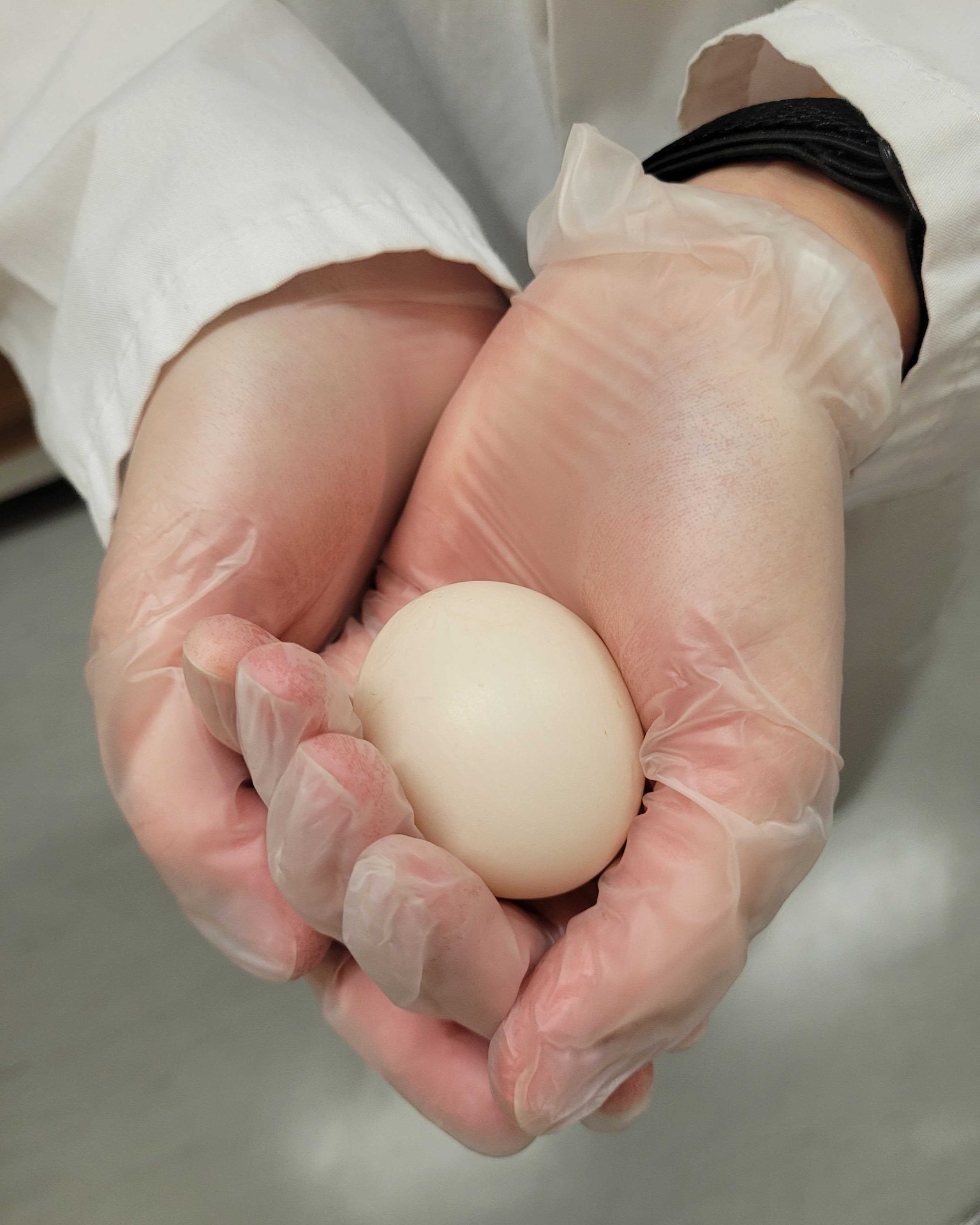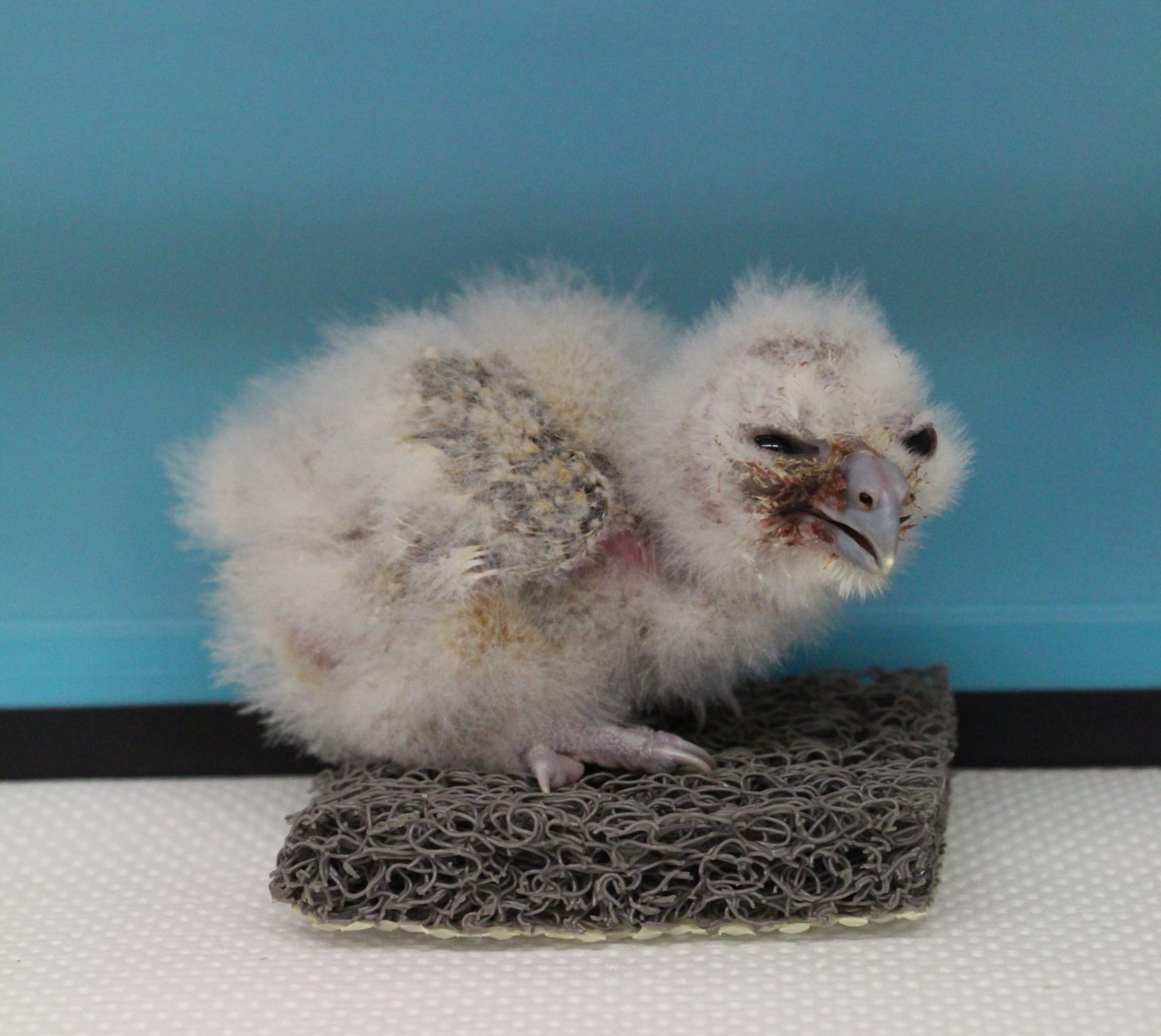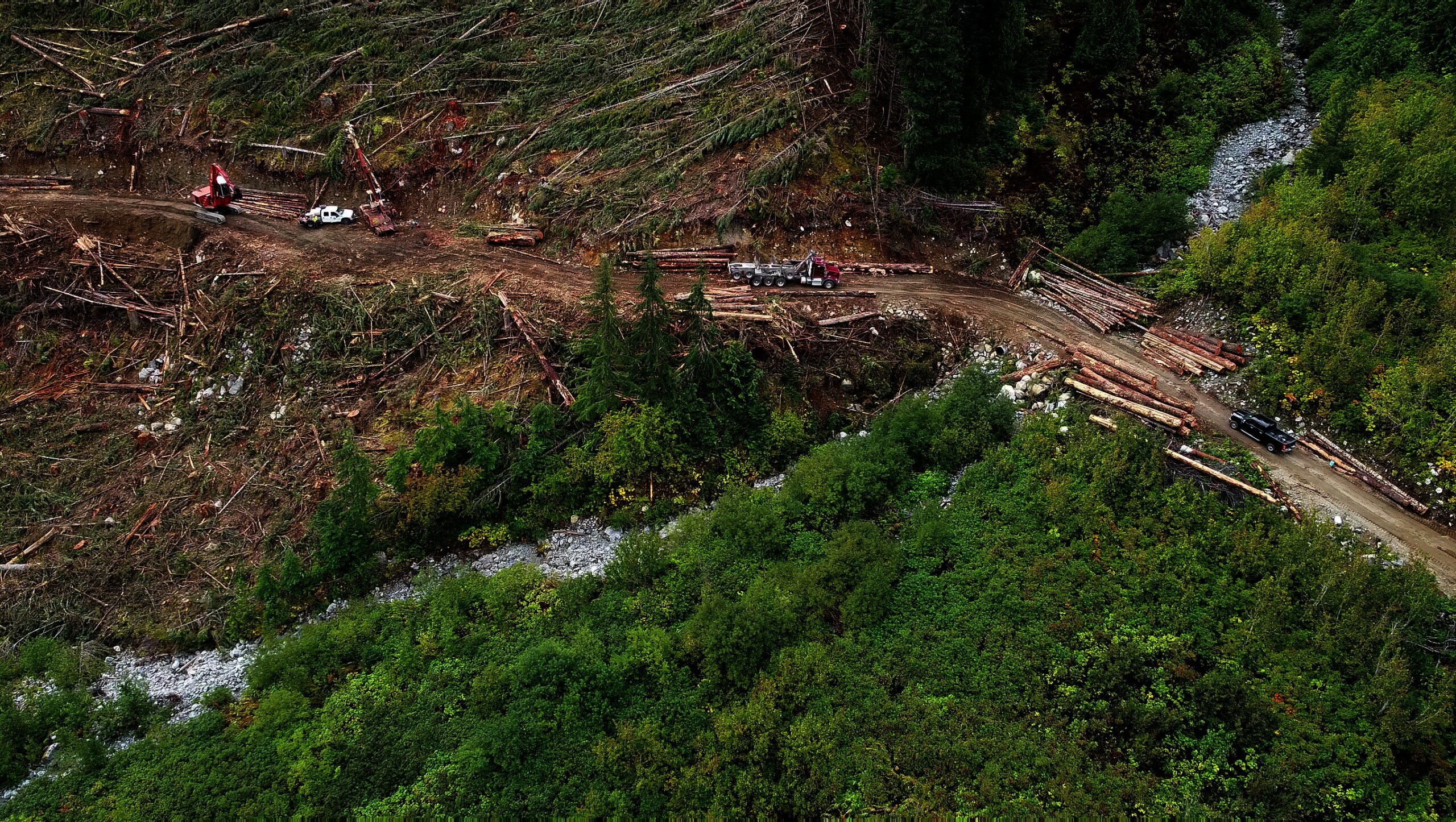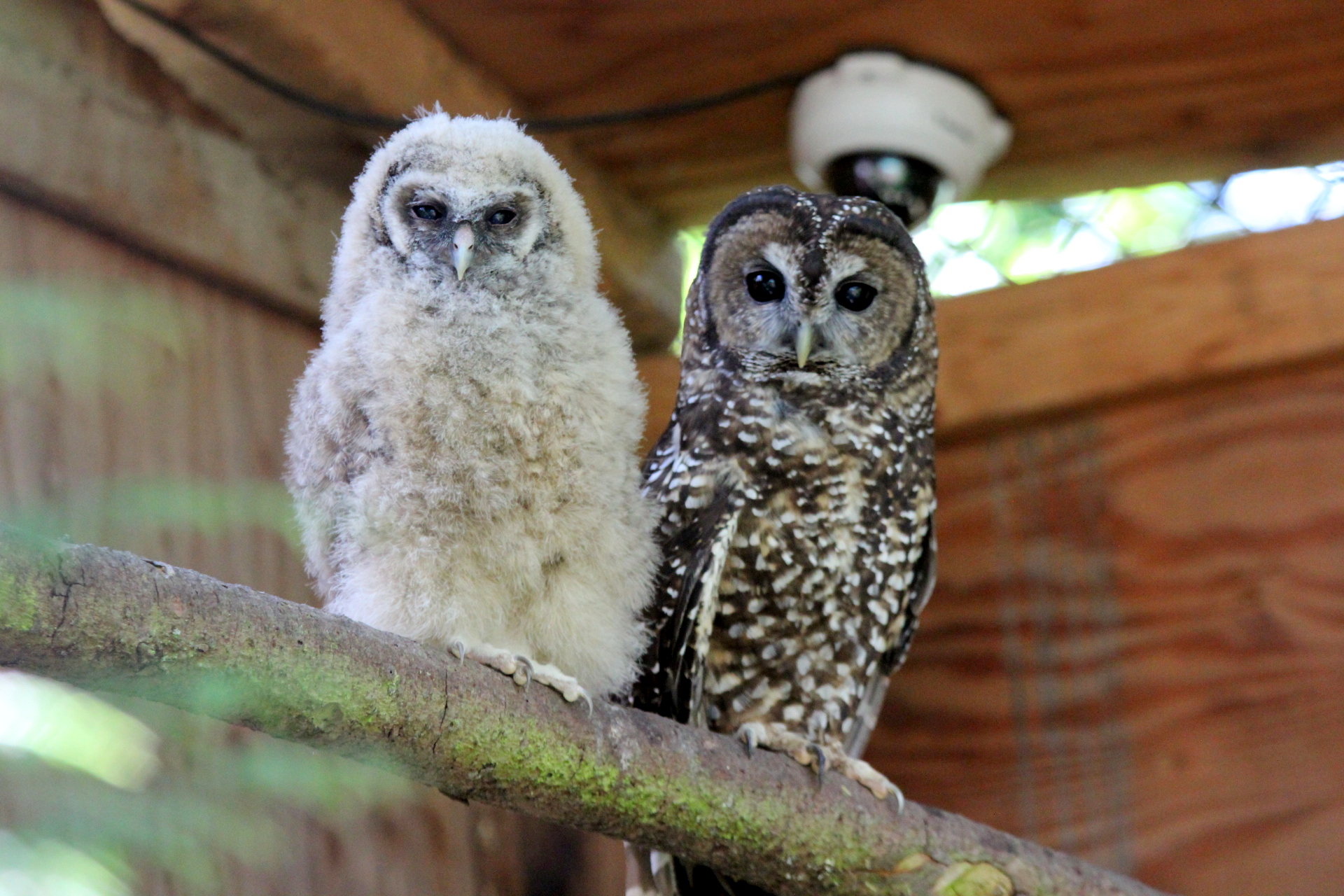
The Right Honourable Mary Simon aims to be an Arctic fox
Canada’s first-ever Indigenous governor general doesn’t play favourites among our majestic natural wonders, but she...
The B.C. government is lobbying intently behind the scenes to dissuade the federal cabinet from issuing an emergency order to protect the endangered spotted owl, according to a cabinet minister briefing document obtained by The Narwhal.
The document cites socio-economic impacts and B.C.’s “significant protections” for spotted owls as reasons why Ottawa should back away from issuing a rare emergency order to prevent industrial logging in the owl’s old-growth forest habitat.
The spotted owl has become a symbol of B.C.’s failure to protect imperilled wildlife and the province’s on-going destruction of old-growth forests, where the football-sized bird nests in cavities in large trees and preys mainly on flying squirrels and bushy-tailed woodrats. Only one wild spotted owl remains in the wild in B.C. following decades of clearcutting in its temperate rainforest habitat.
About 30 spotted owls live at a B.C. government-funded breeding centre in Langley, where eggs are hatched in incubators in the hopes of reintroducing the owls into the wild. Last summer, captive-bred owls, outfitted with tiny GPS backpacks, were set free for the first time. One owl was found injured and returned to the breeding centre — “apparently hit by a train,” according to the document — while the other two died over the winter.


In February, federal Environment and Climate Change Minister Steven Guilbeault said he would recommend cabinet issue a rare emergency order under Canada’s Species At Risk Act to protect the spotted owl’s critical habitat — habitat scientists deem necessary for the survival and recovery of the chocolate-brown bird with creamy white spots. An emergency order would give Ottawa the power to step in and make decisions that normally fall to the provinces, such as whether to issue logging permits in critical habitat. But Guilbeault didn’t make the recommendation; a legal action the environmental law charity Ecojustice launched in June aims to force the minister to follow through. The final emergency order decision rests with the federal cabinet.
“An emergency habitat protection order could increase protection by 120,000 hectares of suitable habitat that occurs throughout the historic range of spotted owl, which will have significant impacts on forest sector jobs and provincial revenue,” states the two-page briefing note prepared for B.C. Minister of Water, Land and Resource Stewardship Nathan Cullen and released through freedom of information legislation. “To date, Canada has never provided compensation for socio-economic impacts of emergency habitat protection orders.”
Only twice in the 20-year history of the federal Species At Risk Act has cabinet issued emergency orders: once to protect the western chorus frog in Quebec and once for the greater sage grouse in Saskatchewan and Alberta.
“While [the Species At Risk Act] forces Minister Guilbeault to recommend the emergency habitat protection order, the federal cabinet can consider other factors, including provincial input …” says the briefing note, dated Feb. 3. Public servants prepared the note for Cullen prior to a meeting with Guilbeault to discuss the federal minister’s determination that spotted owls face imminent threats to their survival and recovery, requiring Guilbeault to take action or run afoul of the Species At Risk Act.
B.C. will need to ensure the federal cabinet “is fully informed of both the socio-economic impact of protecting a further 120,000 hectares and the provincial commitment to recovering spotted owls in B.C.,” the briefing note says. It does not elaborate on socio-economic impacts or place a dollar figure on them.

B.C. Green Party leader Sonia Furstenau said the province’s efforts to derail a spotted owl emergency protection order parallel its attempt to quash a potential Canada-U.S. inquiry into transboundary water pollution from Teck coal mines in southeast B.C.
“There’s a pattern here,” Furstenau said in an interview. “This provincial government puts industry interests over the environment [and] ecological habitat protection.”
“We now have an environment minister and a forestry minister and a water, land, and resource stewardship minister, but none of them seem to be oriented to those things. They are there to make it possible for industry to carry on with its activities on the land in B.C. that have created this catastrophe.”
The planet is in the throes of a global mass extinction event, with 1,800 species officially at-risk in B.C., Furstenau pointed out. “And we have a government that has demonstrated very clearly that it is not going to take the kinds of actions necessary to protect the species that are at risk of extinction.”
She said it’s tragic B.C. is “witnessing the end of a species and can’t recognize that it is our policies, our decisions and our actions that need to change.”
The internal provincial briefing note says B.C. has protected more than 281,000 hectares of critical spotted owl habitat in wildlife habitat areas. It fails to mention some wildlife habitat areas are open for clear-cut logging and target shooting. It also doesn’t mention the B.C. government approved two dozen clear-cuts in spotted owl critical habitat, including in a wildlife habitat area, to make way for the federally owned Trans Mountain pipeline, a seemingly contentious issue the province throws back at Ottawa in the briefing note, saying the pipeline was approved “with little or no mitigation for the captive breeding facility.”
“Trans Mountain has now agreed to mitigate concerns based on guidance from B.C. staff,” the document says. “It was only through B.C.’s insistence and leadership that Trans Mountain has recently agreed to undertake steps to mitigate these risks.”

Cullen’s ministry declined The Narwhal’s request for a telephone interview with a subject matter expert, saying no one was available. In an emailed response to questions, the ministry said construction of the Trans Mountain pipeline occurred through horizontal drilling under a right-of-way within 40 metres of a spotted owl aviary at the captive breeding facility in Langley. “The construction occurred during the sensitive breeding window,” the ministry wrote, saying the province has repeatedly raised concerns with the federal government about noise disturbance from the project and “related risks to survival and breeding success” at the breeding facility.
Andrea Olive, a University of Toronto political science professor whose research focuses on biodiversity and conservation policy, dismissed the B.C. government’s claim it has protected sufficient habitat for the spotted owl. “If that were true, the spotted owl would not be in the situation it’s in. Obviously, it doesn’t have adequate habitat. That’s why it’s endangered.”
The provincial briefing note also informed Cullen that staff at Environment and Climate Change Canada were preparing a federal cabinet briefing package for the emergency protection order. In advance of the cabinet presentation, the documents say Guilbeault’s ministry would engage with First Nations whose traditional territory overlaps with the historic range of spotted owls; staff from Cullen’s ministry would “support the development of this engagement and will participate in the meetings in order to ensure that provincial expertise is shared.”

In an emailed response, Samantha Bayard, media spokesperson for Environment and Climate Change Canada, said the federal government is committed to the survival and recovery of the spotted owl. Bayard said the department is working with the B.C. government “to identify additional measures to protect and recover this symbolic species and its old-growth forest habitat” and has initiated consultations with Indigenous Peoples.
“Consistent with his obligations under the Species At Risk Act, the Minister of Environment and Climate Change Canada will make a recommendation in a timely way to the Governor in Council for measures to protect [the] spotted owl from imminent threats,” Bayard wrote. She said the federal government is committed “to acting on sound science and all available information when it makes decisions.”
In addition to the findings of the imminent threat assessment that formed Guilbeault’s opinion, Bayard said a number of factors may be considered in emergency order decisions. “These include views shared by Indigenous Peoples, socio-economic and legal considerations, views shared by stakeholders and efforts by the government of British Columbia to mitigate imminent threats.”
“Based on actions taken” by the B.C. government, Environment and Climate Change Canada said Guilbeault has determined the species is no longer facing imminent threats to its survival, but that “imminent threats to its recovery remain.”
The Narwhal asked Environment and Climate Change Canada for a list of actions taken by the B.C. government — aside from announcing logging deferral extensions in the Spuzzum Valley, where the last wild spotted owl lives, and a nearby valley that until recently was home to a single male wild spotted owl, who vanished and is presumed dead. “It appears that the province of British Columbia is the lead on this, and they are currently working on a response,” the federal department told The Narwhal in an email. The federal department also sent a copy of this email to the B.C. environment ministry.
B.C.’s environment ministry passed the buck, saying it is not able to speak to the follow-up questions posed to the federal environment ministry. The provincial ministry also sent the federal government a copy of its email to The Narwhal.

The provincial briefing note calls the federal Species At Risk Act “inflexible” and says the Act contains no provisions for a “science-based, adaptive habitat management approach.”
Olive and Ecojustice lawyer Andhra Azevedo expressed surprise about provincial officials making these statements.
Laws like the Species At Risk Act are meant to be inflexible, Olive said. “If it were too flexible, it wouldn’t protect anything.”
She said recovery strategies mandated under the Species At Risk law are scientific documents, based on western science and Indigenous Knowledge. “It’s science telling us what the species is, what its habitat and distribution is, what its threats are … If science is saying a threat is habitat loss, and we have scientific reason to believe that that’s true, then the government ought to take action to reverse habitat loss.”
Azevedo pointed out B.C. has no stand-alone legislation to protect species at risk of extinction, despite a 2017 commitment by the BC NDP, the party in power, to pass it. She said conservation groups like the Wilderness Committee, which Ecojustice represents in the emergency order legal action, have no alternative but to turn to the federal legislation. “The Species At Risk Act is all about a science-based approach, at least in terms of many of its first steps.”

According to the provincial briefing note, B.C. government experts with decades of experience in spotted owl recovery do not recommend additional habitat protections. Instead, the unnamed experts recommend a “science-based, adaptive habitat management approach.” Such an approach, the note said, will ensure habitat protection measures are “adjusted and applied” as more owls are released and “we learn more about where and how released owls disperse and establish territories.”
Olive said she hadn’t heard of the “adaptive habitat management approach.” The Narwhal asked Cullen’s ministry for an explanation and was told, “This science-based approach to identifying critical habitat was intended to adapt over time as new information is gathered. As an example, monitoring of released captive-born owls will be used to determine habitat requirements and test habitat models.” The ministry also said the “adaptive management cycle” supports the inclusion of Indigenous world views and Indigenous Knowledge.
The ministry said the federal government will complete a socio-economic impact assessment as part of their cabinet package and “B.C. will support with information as requested.”
Azevedo said an emergency order represents one of the last opportunities to try to recover spotted owls in Canada.
“It is very clearly time for the federal government to step in, under the Species At Risk Act, and do exactly what the emergency order provision is intended to do — take urgent and emergency action to stop [logging] authorizations that are threatening the ability to recover this species … so that hopefully, the species can start to have a stable population in the wild.”
Get the inside scoop on The Narwhal’s environment and climate reporting by signing up for our free newsletter. A $335 million funding commitment to fund...
Continue reading
Canada’s first-ever Indigenous governor general doesn’t play favourites among our majestic natural wonders, but she...

In Alberta, a massive open-pit coal mine near Jasper National Park is hoping to expand...

A trade war could help remake B.C.’s food system, but will family farmers be left...
